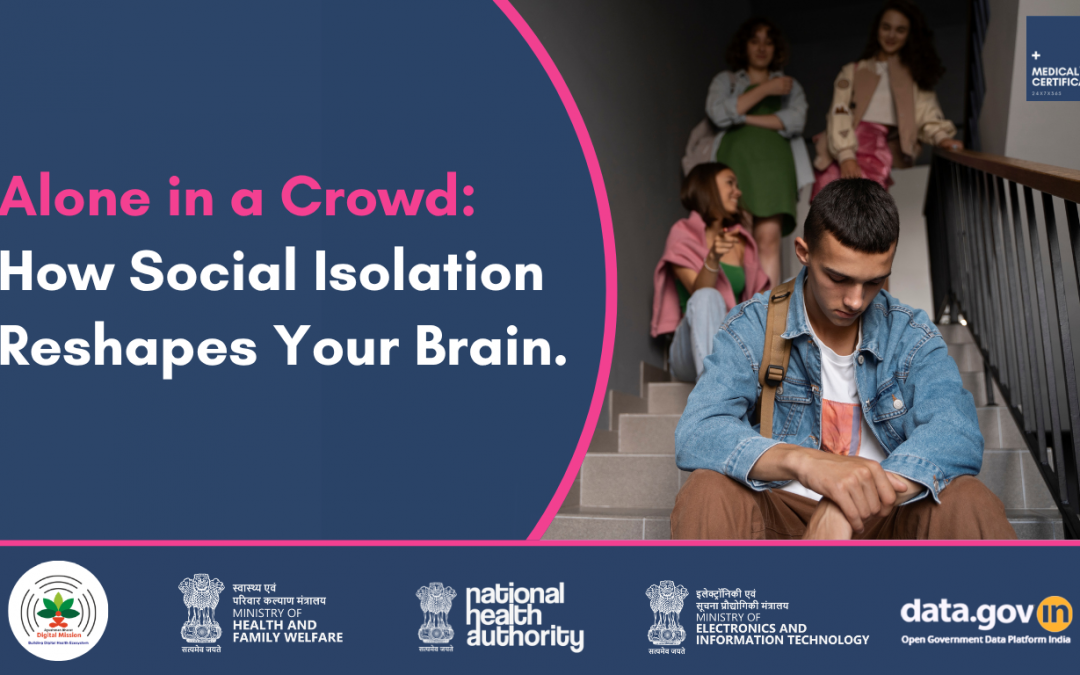In a world constantly more interconnected with smartphones, social media, and internet access all day, every day, it might not seem right that feelings of loneliness and social isolation can separately or combined lead to public health crises. We reside in crowded cities; we share updates with hundreds of “friends”; but everyday there are statistically more people saying they feel alone. But social isolation is more than mood; it changes our brain on many levels, some of which are permanent.
Here on this site, we learn what social isolation is all about, how common it has become, and most importantly, what it does to the human brain. The mission? To make you realize how serious it is—and even identify its symptoms in you or someone you love.
What is Social Isolation?
Social isolation is defined as a situation in which you have few, if any, contacts with people. Social isolation is different from being alone, or choosing to be alone, which is refreshing and good. Social isolation is undesirable, unwanted. Social isolation means you do not have anyone to communicate with daily, lack a support group, and feel disconnected from humanity.
Some notable characteristics are:
- Infrequent social contacts
- Lack of engagement in communal life
- Perceived exclusion from membership
- Isolation without regular visitors
It is better to differentiate between social isolation and loneliness, though the two do at times coincide. Loneliness is a self-perceived experience of feeling isolated, irrespective of social situations. Social isolation is objective and quantifiable, but just as destructive.
How Often Does It Happen?
Social isolation affects people of all ages more and more.
- WHO research indicates that across the world, 20 to 34% of older adults report feeling lonely and isolated.
- The Harvard University study conducted this year reported that an estimated 36% of Americans, 51% of young mothers raising young children, and 61% of young adults had experienced serious loneliness.
- A poll completed by the Center for the Study of Developing Societies in 2021 pointed out that 30% of young urban Indians said they experienced loneliness or isolation, especially after the COVID lockdowns.
As work-from-home practices, digital dependency, and nuclear families become normalized, social constructs that provided interactions (such as joint families, community colonies, and conventional workspaces) dissipate. The COVID-19 pandemic effectively broke down the normalizations that led to social isolation, leaving millions in a social wasteland for many people in the world.
How Social Isolation Affects Your Brain
Here is where we get to the frightening part. Isolation from others alters your brain in the same way that damage from a physical accident does. Here’s how:
1. The size of the Hippocampus is reduced
The hippocampus is the part of the brain that oversees learning and memory. According to research, the brain’s area where memories are formed, the hippocampus, decreases in size as the result of loneliness in older individuals. You are more likely to develop dementia, Alzheimer’s disease or mental decline.
2. Cortisol increases
Loneliness can be very stressful. Loneliness triggers a system in the brain that raises cortisol levels. When left for an extended period, elevated cortisol weakens your immune system, interrupts your sleep and kills brain cells which can lead to depression and anxiety disorders.
3. Damage to the Prefrontal Cortex
The prefrontal cortex supports social movement, empathy, and decision making. The literature indicates that the association is supported by decreased activity in the prefrontal cortex, which defines one’s ability to read social cues, tolerate emotion, or empathize, thus perpetuating the vicious cycle of isolation.
4. Disruption of Reward System
Human interaction releases the brain reward system. In isolation, the absence of positive feedback due to social relationships under-stimulates this system. It is bound to lead to feelings of emptiness, loss of motivation, and even addiction as individuals fail to substitute social reward for food, alcohol, or digital media.
5. Greater Risk of Mental Illness
Several studies link social isolation to a greater risk of:
- Depression
- Anxiety
- Substance abuse
- Suicidal behavior and ideation
In a 2020 meta-analysis that was published in The Lancet Psychiatry, socially isolated individuals were 1.5 to 2.5 times more likely to have depression than those who had social connections.
Real-World Impact: The Invisible Epidemic
Now, as one more example, think about someone who is a retired 70-year-old person living alone, children living abroad, or think of a college student who is far from home and struggling to make new friends in a new city. Or a single parent working from home, caregiving all day, but also working, with no adult company.
These examples could be multiplied easily as they are now becoming commonplace. The physical symptoms may not appear immediately, but the previously mentioned lid, fog, fatigue, anxiety, and sadness are already engaged in the background. As time goes by, it will all snowball, and impact productivity, physical health, and relationships.
What Solutions Are Possible?
Although social isolation involves many details, it can be resolved. Look at these ways that can help both individuals and communities.
- Start Small: Feeling alone? Then, start by talking with someone you love.
- Seek Help: If you are having stress, then do not hesitate to get in touch with a counselor or a therapist. It will help to regain confidence.
- Strengthen Community: Community centers, programs for seniors, and mental health support should all be supported by public and private funds. Simply designing neighborhoods where residents can stroll and meet is a form of urban planning that helps overcome isolation.
- Digital Detox: Funnily enough, turning off social media can help us connect better in real life. Cutting down on internet use while spending more time talking or meeting people in real life can mean a lot.
Human Connection Is Not Optional
The brain evolved to thrive with human connection. From infancy through the oldest age, we require other people—not only emotionally but biologically. Loneliness actually starves the brain, as do sleep deprivation or hunger.
So if you’re lonely, don’t feel alone—and that’s the tragedy. Millions are too. Begin with one encounter, one conversation, one moment of vulnerability. It could be the start of getting your mind healthy again.
Because when you’ve got a healthy mind, there is a cycle of connection—and it begins with you.
If you or someone around you feels alone or disconnected, don’t wait. Chat, call out, and remember: connection heals.

